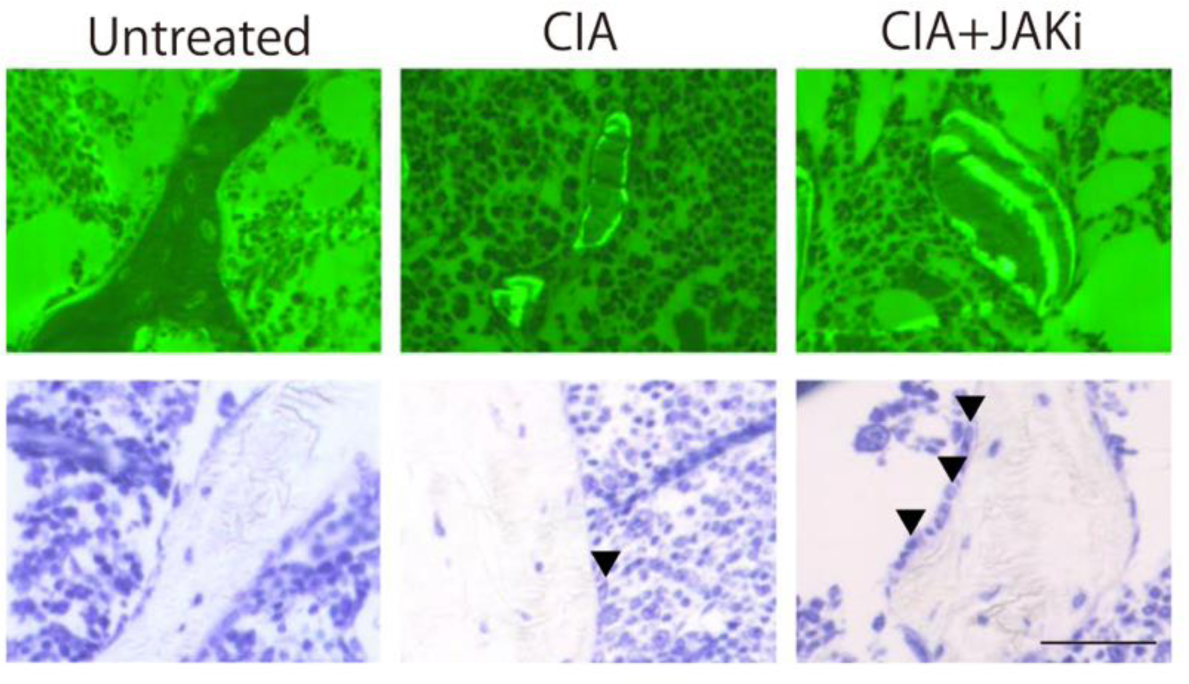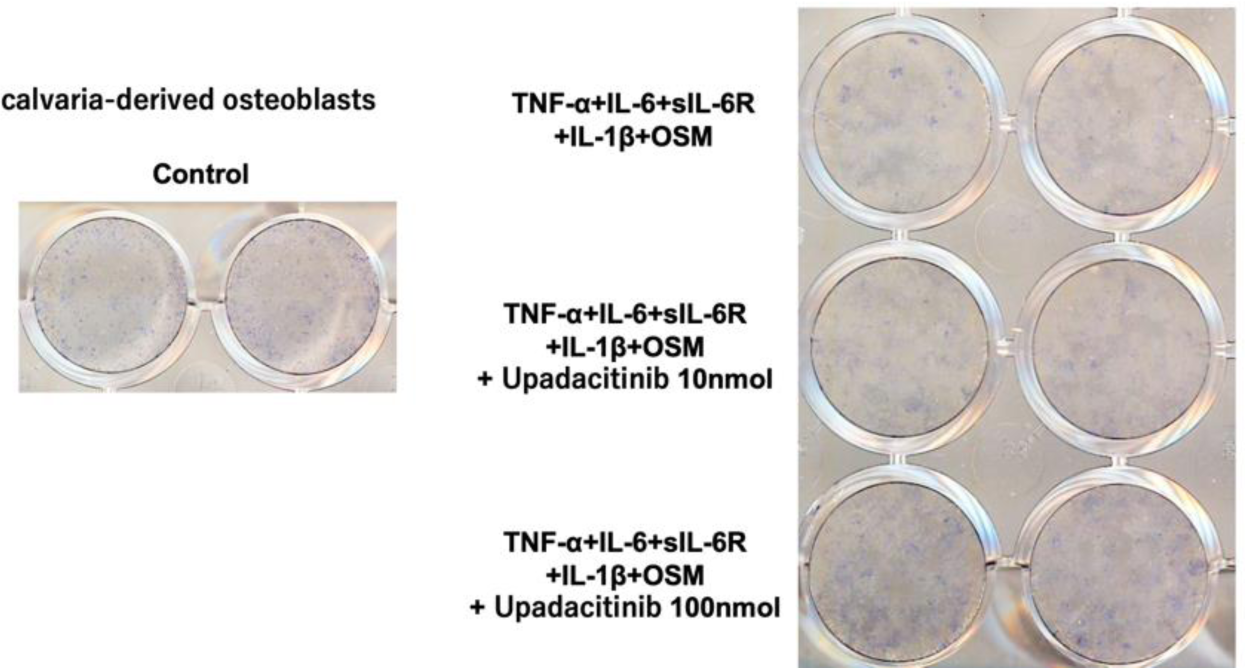

Background: Rheumatoid arthritis (RA) is an autoimmune disease characterized by inflammation and bone damage. The types of bone damage in rheumatoid arthritis (RA) include joint erosion, periarticular osteoporosis, and systemic osteoporosis. Janus kinase (JAK) inhibitors ameliorate inflammation and joint erosion in RA, but their effect on the three types of bone loss have not been reportedly explored in depth.
Objectives: Bone protective effects of JAK inhibitors (JAKi) have attracted much attention. We aimed to elucidate either osteoclasts or osteoblasts JAKi act on to exert bone-protective effects on three types of bone damage in RA.
Methods: We administered JAKi to Collagen-induced arthritis (CIA) mice and performed Micro- computed tomography (μCT) and histological analysis on the calcaneus, distal femur, and spine. We also examined their effects on osteoblast and osteoclast differentiation in vitro.
Results: The Jaki ameliorated joint erosion, periarticular osteopenia and systemic bone loss. JAKi administration reduced osteoclast number at all the bone sites. Osteoblast number was increased in the calcaneus, distant from the inflamed synovium, periarticular bone and spine, but not in the calcaneus in proximity to the inflamed synovium. In vitro, ALP-positive cells were decreased under pro-inflammatory cytokines and increased only by the addition of high concentrations of JAKi. JAKi suppressed osteoclastogenesis in the co-culture system and abrogated the suppressive effect of IFN-g on osteoclastogenesis.
Conclusion: The effects of JAKi on osteoclasts and osteoblasts depend on local inflammatory conditions. JAKi exert osteoprotective effect mainly by suppressing osteoclastogenesis in joint erosion, while JAKi suppress osteoclastogenesis and promote osteoblastic bone formation in periarticular osteopenia and systemic osteoporosis.
REFERENCES: [1] Adam S, Simon N, Steffen U, et al. JAK inhibition increases bone mass in steady-state conditions and ameliorates pathological bone loss by stimulating osteoblast function. Sci Transl Med. 2020;12(530):eaay4447.
[2] Murakami K, Kobayashi Y, Uehara S, et al. A Jak1/2 inhibitor, baricitinib, inhibits osteoclastogenesis by suppressing RANKL expression in osteo- blasts in vitro. PLoS ONE. 2017;12:e0181126.
[3] Traves PG, Murray B, Campigotto F, et al. JAK selectivity and the implica- tions for clinical inhibition of pharmacodynamic cytokine signalling by filgotinib, upadacitinib, tofacitinib and baricitinib. Ann Rheum Dis. 2021;80:865–75
The effect of the JAK inhibitor on osteoblastic bone formation in bone damage(periarticular bone) in autoimmune arthritis. Representative calcein labeling (upper), toluidine blue staining(lower). The arrowheads show osteoblasts.

Effects of JAK inhibitors in the inflammatory environment in osteoblast differentiation culture systems(ALP stain).

Acknowledgements: NIL.
Disclosure of Interests: Hiroshi Takayanagi: None declared, Masatsugu Komagamine: None declared, Noriko Komatsu: None declared, Kazuo Okamoto The Department of Osteoimmunology is an endowment department supported with an unrestricted grant from AYUMI Pharmaceutical Corporation, ELECOM, JCR Pharmaceuticals, Kondo Cotton Spinning, MIKIHOUSE, MITSUI FUDOSAN, Meiji, Noevir, TAKENAKA, TENNENBUTSU IKAGAKU KENKYU ZAIDAN and Yakult., Kotaro Matsuda: None declared, Tsutomu Takeuchi: None declared, Yuko Kaneko The Department of Osteoimmunology is an endowment department supported with an unrestricted grant from AYUMI Pharmaceutical Corporation, ELECOM, JCR Pharmaceuticals, Kondo Cotton Spinning, MIKIHOUSE, MITSUI FUDOSAN, Meiji, Noevir, TAKENAKA, TENNENBUTSU IKAGAKU KENKYU ZAIDAN and Yakult.